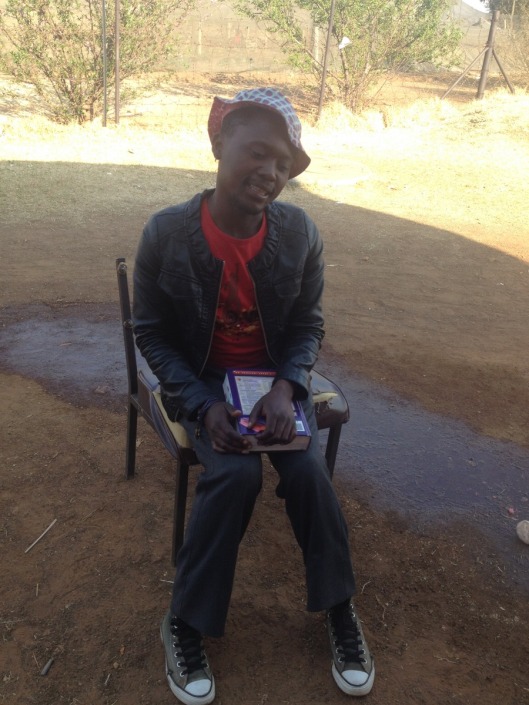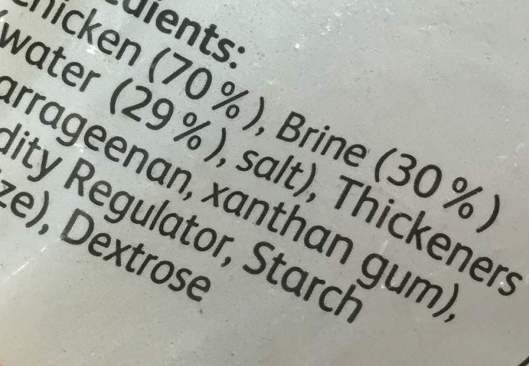It’s a Wednesday morning around 5am and like many teenagers her age, 16 year old Nonhle from Tembisa, east of Johannesburg is getting ready for the day. But unlike her peers, Nonhle is not getting ready for school.
At eight months pregnant, Nonhle is going to her local clinic for one of her final check-ups before her baby arrives. The clinic she goes to opens at eight but because the queues are long, she has to be there at 6am. In the queue, she waits with other women, many of whom are older than her. After waiting for hours, she eventually gets to see the doctor at around 2pm.
When she comes out of the doctor’s room she gives a short smile. Both she and her baby are fine. She does not yet know the sex of the baby, partially because she wants it to be surprise but also because the clinic does not have a sonogram diagnostic machine. She would have to travel further to get to a hospital or clinic with a sonogram diagnostic machine.
Nonhle fell pregnant at the beginning of the year when she and her friends went out.
“There was a party at home and later that night my friends and boyfriend and I went out for drinks. You know at such outings one thing leads to another,” says Nonhle.
Nonhle says she and her boyfriend had been sexually active for a year already and they had always used condoms. But that night, they didn’t have one. They had sex anyway. The next morning when she sobered up she says she began to fear that she might have fallen pregnant. A few weeks later when her monthly menstrual cycle did not start, her fear became a reality.
Besides the physical aspects of being pregnant, Nonhle says not much has changed since she found out she would be a mother. She still hangs out with her friends and continues to go to school.
Nonhle is in grade 11 at one of the local schools. She says she is able to keep up with her school work because whenever she misses school, her friends update her on what was taught.
Nonhle says being pregnant is nothing special at her school, many others are in the same position.
According to Portia Serote from Treatment Action Campaign, Tembisa is one of the places with the highest rates of teenage pregnancies in Gauteng.
The Department of Education says that at least 20 116 teenagers fell pregnant in 2013/2014, with most of the pregnancies being from Gauteng province.
According to Stats SA, the numbers are as high as 99 000.
The map below shows different pregnancy numbers per province:
Please include attribution to with this graphic.
Graphic by Mamaponya Motsai
Serote says teenage pregnancy continues to be a problem in South Africa because government has set young people up to fail.
“They have the right at the age of 12 years to test for HIV. At the age of 12 a girl can go have abortion without parental consent, sex between minors is decriminalised. We agree with government that these rights are good but young people are not being given the space to safely practice them responsibly. Government needs to provide safe spaces for pupils to practice their sexual rights,” says Serote.
She says the fact that there are still no condoms in schools is one of the ways government is not providing a safe space for young people to practice the very rights they have acknowledged.
She says youth friendly clinics are a good initiative but at the end of the day, it will always be difficult for teenagers to collect condoms or contraceptives at a place where their elders are working. She says government must allow for condoms in school bathrooms were pupils will have access to them without fear.
“They are worried about having condoms at schools but our children are already getting pregnant,” says Serote.
In a survey done by the Department of Education on why teenagers fell pregnant, 66% of them said they did not use any contraceptive.

Loading…
Serote says access to contraceptives is only one part of the problem. The sex education provided to pupils at the moment is not comprehensive enough. She says though they are allowed into schools to teach sex education and related issues, there are limitations on what they can talk about.
“We are not allowed to go into detail when teaching on condoms. We cannot speak about STIs in detail or demonstrate how the condom is used,” says Serote
This she says shows how government is in denial about what is happening.
“The rate of teenage pregnancy in the country is telling us that our young girls and boys are having sex. So then if that is the case they should allow us to demonstrate how the condom is used and talk about things indepth, so that they know what they are doing and how to take the right precautions,” says Serote.
Nineteen year old, Nono, also from Tembisa, says she always thought she knew how to properly use a condom. So when she went to the hospital to have the lump in her breast checked, the last thing she expected was to be told that she was pregnant.
“When the results came back, they told me the lump in my breast was nothing to worry about but I was pregnant. I was very shocked. I could not believe it. My boyfriend and I always use a condom. I don’t know what happened,” says Nono.
Serote says issues of teenagers saying they don’t know what happened or the condom burst are due to either a lack of access to condoms on not knowing how to use them properly. Both of which could easily be avoided. She also says more must also be done to help pupils who come from poor backgrounds and end up having to sleep with older men for money.
This she found to be very common when working in Tembisa.
“I would have young girls saying to me, I am the breadwinner at home, I have siblings, I have to make sure that every day I put bread on the table. If my boyfriend who is a taxi driver calls me at half past twelve and says come, I want you, I have R500 for you. I will have to go. I don’t know where this education is going to take me. We see a lot of people with degrees and honours [degrees] sitting in the township like us, as if they are not educated,” says Serote.
She says if the problem of teenage pregnancy is to be solved, it has to be looked at from all aspects and socio-economic background is one such aspect.
Gender activist, Lisa Vetten agrees. Vetten says everyone must be involved in finding a solution, both girls, boys, parents and government. Vetten says parents need to be empowered to talk to their children about sex.
And since two people are involved in making a baby, Vetten says the same amount of focus has to be put on the boy child as in the girl child.
When Andile Lefera, now 23, found out almost four years ago during his grade 11 year that his girlfriend was pregnant, he decided he would stand by her and try to help as much as possible.
Though he was from a poor family, where his grandmother is the only breadwinner, he was determined to help care for his child.
He dropped out of school and went to look for a job.

But many other girls do not have the father of their children offering support like Lefera did.
Vetten says it is important to remind teenagers, parents and government that it is not the end of the world when a pupil becomes pregnant. The focus should be on giving them the support they need and helping keep them in school.
According to United Nations Educational, Scientific and Cultural Organization, even though there is no law prohibiting young mothers to return to school after child birth, only one in three do so. This is due to a number of reasons including, stigma and not having enough money for child care.
The idea of providing condoms to pupils at school has received opposition from a number of parties including the Minister of Basic Education Angie Motshekga and some MECs of education. Meanwhile, the problem persists.
The MEC of Education in Gauteng, Panyaza Lesufi, was recently quoted as saying that they had run out of ideas on how to deal with teenage pregnancy.
Serote, however, says this simply cannot be.
“They have not even tried. If we haven’t seen condoms at school they have not done much, if they have not provided comprehensive sex education they have not done much, if they have not spoken to parents to tell them , ‘sex education starts at home’, they have not tried.”
The Department of Education’s policy draft on HIV, STIs and TB is currently being reviewed. If approved, the policy will see condoms and other contraceptives being made available to pupils at schools.
That however, maybe a big if.




